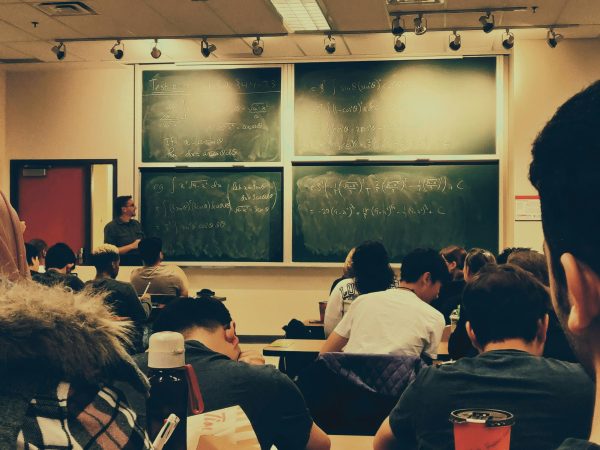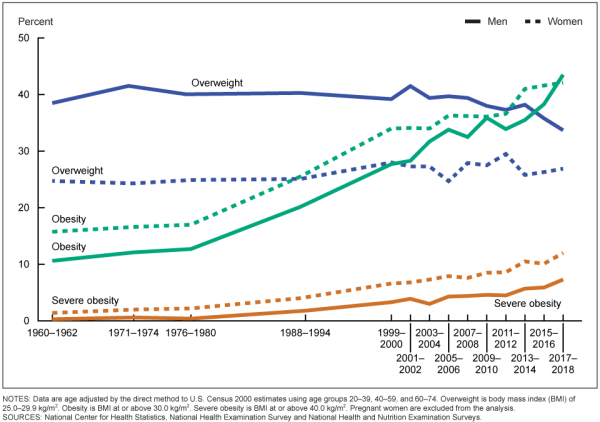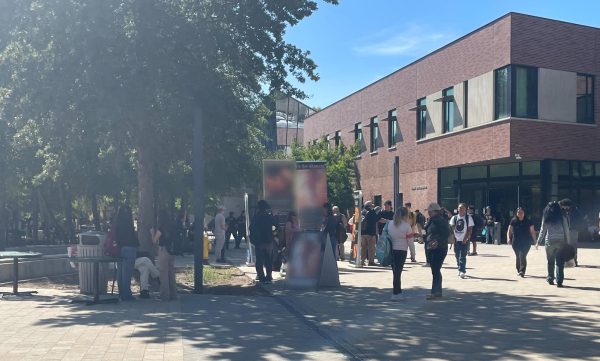Letter to Editor: In response to your Feb. 14 editorial “Why we name sources”
February 20, 2018
I’m writing in response to your Feb. 14 editorial “Why we name sources.”
There are two issues I’d like to address.
First, I find the disconnect between the article and the large photo troubling.
In the article, the editorial board elaborates on how it balances anonymous sourcing with the principle of transparency.
Citing two different examples, the board contrasts its naming of Dr. Albert Ponce with the decision to withhold the name of a Deferred Action for Childhood Arrivals student.
Yet, the photo of Dr. Ponce is digitized as though his identity needs to be masked.
We all know the adage that a picture speaks a thousand words. This photo says either there is something Dr. Ponce needs to hide, or that Dr. Ponce ought to hide. Neither is correct.
Second, the article describes Dr. Ponce’s public lecture as a “speech,” as sharing “political viewpoints,” giving “opinion” and speaking his “truth.”
In fact, Dr. Ponce was sharing knowledge and analysis —not opinion or viewpoints— based on his years of education and academic research.
Dr. Ponce is a full-time faculty member at Diablo Valley College. He holds a Ph.D. from UCLA in political science, and specializes in race, ethnicity and politics. In the incident cited, he was giving a public lecture at DVC in his capacity as faculty with expertise in American racial politics at a time when the country is struggling to understand an upsurge in white supremacy.
The right-wing is indeed on a witch hunt against Dr. Ponce precisely because they want to shut down his ability to share his knowledge about the long history of racism in this country.
The Contra Costa Community College District policy on Academic Freedom states that the District “affirms its belief in the academic freedom of faculty, management and students to teach, study, conduct research, write and challenge viewpoints without undue restriction.”
The DVC Inquirer can support that policy by more carefully thinking about the images and language it uses so as not to mischaracterize people and events.









































































Gus • Feb 27, 2018 at 1:01 pm
I agree with Dr. Mazzone. Dr. Ponce has dedicated years of his life to research, so please do not belittle his work by referring to it as a mere “opinion” – as if he is one of those pundits that regularly appear on Fox or CNN. Marketization of education has already severely devalued the intellectual’s role in the public sphere, so please don’t add insult to injury.
Cesar • Feb 20, 2018 at 3:15 pm
Thank you for this response to what was an outrageous and irresponsibly written article. I’d just like to emphasize that the inquirer not only further put this professor in danger, but that they’re basically reprinting inflammatory talking points made from a group of literal militant Neo-Nazis without doing any research on who these groups are that are coordinating this campaign and are responsible for the continual harassment against this school. Journalism should always be a tool to hold the powerful accountable, not to find multiple ways to run hit pieces and hot takes at the expense of someone’s life. These groups have a huge platform and are backed by big money. I would say that the inquirer should run pieces on these groups, of which there’s plenty of known information on, however I don’t trust the inquirer’s ability to do any kind of actual responsible journalism. I will however warn the folks at the inquirer to use extreme caution when reporting on events like this in the future. Because not only is the reporting on these events severely lacking in terms of content, reporting what actually happened, and the understanding to report on such topics, but it is actively endangering the lives of students and faculty on this campus.
In short, please stop. Please stop everything. This paper is awful and is a disgrace to journalism.